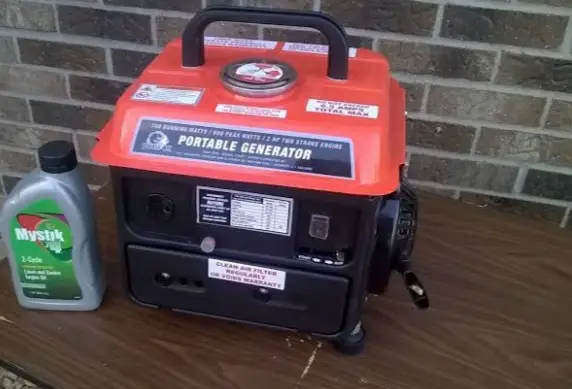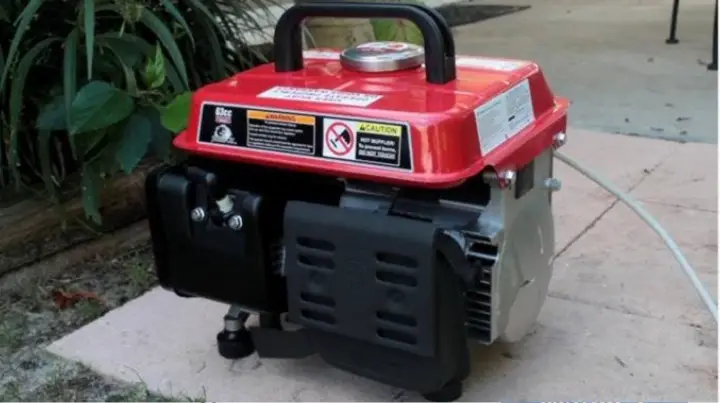As an Amazon Associate, we earn from qualifying purchases. This does not affect the price you pay or the quality of the products you buy. For more information, please read the full affiliate disclosure here.
In recent months, there has been a noticeable rise in reports of 2-stroke oil leaking from the exhaust systems of various small engines, including motorcycles, chainsaws, and other power tools. This phenomenon, while not entirely uncommon, has raised concerns among users and mechanics alike. What might initially seem like a minor inconvenience could actually signal deeper issues within your engine that need immediate attention.
Understanding 2-Stroke Engines and Their Oil Requirements
To fully grasp why oil might leak from your 2-stroke engine’s exhaust, it’s crucial to understand how these engines operate. Unlike 4-stroke engines, which have separate systems for oil and fuel, 2-stroke engines require oil to be mixed directly with the fuel. This fuel-oil mixture serves a dual purpose: powering the engine while lubricating its moving parts.
This simplicity is why 2-stroke engines are favored in small, lightweight applications. However, this same simplicity also means that any imbalance in the fuel-oil mixture or engine wear can lead to issues such as oil leakage from the exhaust.
What Causes Oil to Leak from the Exhaust?

Oil leaking from the exhaust of a 2-stroke engine is typically a symptom of one or more underlying problems. Let’s explore these potential causes in more detail:
1. Incorrect Fuel-Oil Mixture
The most common reason for oil leakage is an improper fuel-oil ratio. In a 2-stroke engine, the fuel-oil mixture must be precise. Too much oil in the mixture, and the engine may not be able to burn it all during combustion. The unburned oil then exits through the exhaust, leading to the visible leak.
For example, if the manufacturer recommends a 50:1 fuel-to-oil ratio but you mix it at 40:1, there’s 25% more oil than needed. This excess oil, unable to burn off completely, gets expelled through the exhaust. This not only causes the oil to leak but also results in other symptoms, such as excessive smoke and a fouled spark plug.
2. Clogged or Dirty Air Filter
The air filter in your 2-stroke engine plays a critical role in maintaining the correct air-fuel mixture. If the air filter becomes clogged with dirt or debris, the engine will receive less air than it needs for complete combustion. This incomplete combustion means that not all the oil in the fuel is burned, causing the excess to escape through the exhaust.
Imagine running your chainsaw with a filter that hasn’t been cleaned in months. The restricted airflow would force the engine to operate inefficiently, and the result is unburned oil leaking from the exhaust. This scenario is more common than you might think, especially in environments where dust and debris are prevalent.
3. Worn or Damaged Engine Components
Over time, the internal components of a 2-stroke engine—such as piston rings, gaskets, and seals—can wear out or become damaged. These components are essential for maintaining compression and ensuring that oil remains in the correct areas within the engine. When these parts begin to fail, oil can seep into the combustion chamber and subsequently escape through the exhaust.
For instance, if the piston rings are worn, they might allow oil to bypass them and enter the combustion chamber. This oil doesn’t get burned off efficiently and ends up leaking through the exhaust. Similarly, a damaged gasket might allow oil to leak into areas where it doesn’t belong, causing similar problems.
Consequences of Ignoring Oil Leaks
While it might be tempting to ignore a small amount of oil leaking from your exhaust, doing so can lead to much more significant problems down the line. Here’s why you shouldn’t overlook this issue:
1. Muffler Clogging and Reduced Engine Performance
Excess oil that isn’t burned off during combustion can accumulate in the muffler. Over time, this build-up can clog the muffler, reducing the engine’s ability to expel exhaust gases efficiently. This can lead to reduced engine performance, increased fuel consumption, and in severe cases, a complete blockage that prevents the engine from running altogether.
A clogged muffler can also create back pressure in the exhaust system, further straining the engine. This added stress can exacerbate wear on other components, potentially leading to more costly repairs.
2. Increased Smoke Emissions
An improper fuel-oil mixture or a malfunctioning engine can lead to increased smoke emissions. In a 2-stroke engine, this typically manifests as thick, blue smoke from the exhaust. While this might seem like a minor nuisance, it’s actually a sign that the engine is burning too much oil, which is not only inefficient but also harmful to the environment.
Excessive smoke can also be an indication that your engine is running too rich, meaning it’s receiving more fuel than it needs. This condition not only wastes fuel but can also lead to fouling of the spark plug and other components, reducing the overall lifespan of your engine.
3. Spark Plug Fouling
When excess oil leaks into the combustion chamber and doesn’t burn off completely, it can coat the spark plug with oil and carbon deposits. This condition, known as spark plug fouling, can make it difficult to start the engine and can cause misfires, leading to poor performance.
A fouled spark plug might need to be cleaned or replaced frequently, which can become a hassle over time. Additionally, continued operation with a fouled spark plug can strain the ignition system, potentially leading to more significant electrical issues.
Troubleshooting and Fixing Oil Leaks

If you notice oil leaking from your 2-stroke engine’s exhaust, it’s essential to take action promptly. Here’s a step-by-step guide to diagnosing and fixing the problem:
1. Check and Adjust the Fuel-Oil Mixture
The first step in addressing oil leakage is to ensure that you’re using the correct fuel-oil ratio as specified by the engine’s manufacturer. If you’re uncertain, consult the owner’s manual or a reliable source for your specific engine model.
If you’ve been using an incorrect ratio, drain the current fuel mixture from the tank and refill it with the correct mixture. Be sure to measure the oil accurately when mixing to avoid future issues. After adjusting the mixture, run the engine for a few minutes to see if the leakage persists.
2. Inspect and Clean the Air Filter
Next, check the air filter for dirt, debris, or blockages. If the filter is dirty, clean it according to the manufacturer’s instructions or replace it if necessary. A clean air filter is crucial for maintaining proper airflow and ensuring complete combustion.
After cleaning or replacing the filter, start the engine and observe whether the oil leakage continues. If the problem persists, you may need to look further into the engine’s internal components.
3. Examine Engine Components for Wear and Damage
If adjusting the fuel mixture and cleaning the air filter don’t resolve the issue, the next step is to inspect the engine’s internal components. This task might require disassembling parts of the engine, so it’s important to have the right tools and some mechanical knowledge.
Begin by inspecting the piston rings, which are responsible for sealing the combustion chamber and preventing oil from entering. If the rings are worn or damaged, they will need to be replaced. Similarly, check the gaskets and seals for any signs of wear or leaks. Replacing these components can be more complex and may require professional assistance.
4. Perform a Compression Test
If you suspect that the engine’s internal components are causing the oil leakage, a compression test can help confirm your suspicions. This test measures the engine’s compression levels, which can indicate whether the piston rings or other components are worn.
Low compression levels typically suggest that the piston rings are no longer sealing effectively, allowing oil to enter the combustion chamber. In such cases, replacing the rings or other affected parts is usually necessary to restore proper engine function.
5. Seek Professional Help If Needed
If you’re not comfortable performing these inspections and repairs yourself, or if the problem persists after trying the above steps, it may be time to seek professional assistance. A qualified mechanic can diagnose the issue more accurately and perform any necessary repairs.
Preventive Maintenance Tips to Avoid Future Issues
Preventing oil leaks and other issues with your 2-stroke engine involves regular maintenance and attention to detail. Here are some tips to help you keep your engine running smoothly:
1. Regularly Check the Fuel-Oil Mixture: Always use the correct fuel-oil ratio as specified by the manufacturer. Mixing the fuel properly is one of the most straightforward ways to prevent oil leaks and other related issues. Keep a measuring cup or syringe handy to ensure accuracy when mixing.
2. Clean or Replace the Air Filter Frequently: Depending on how often you use your engine and the environment in which it operates, you should clean or replace the air filter regularly. A clean filter ensures that the engine receives adequate airflow, which is crucial for efficient combustion.
3. Inspect the Spark Plug: Regularly check the spark plug for signs of fouling or wear. A clean, properly functioning spark plug is essential for reliable engine performance. If you notice oil or carbon deposits on the plug, clean it or replace it as needed.
4. Conduct Routine Engine Inspections: Periodically inspect the engine’s internal components, especially if your equipment is used frequently or in harsh conditions. Checking the piston rings, gaskets, and seals for wear can help you catch potential issues before they lead to more significant problems
5. Use High-Quality Oil and Fuel: Using high-quality oil and fuel can make a significant difference in the performance and longevity of your 2-stroke engine. Inferior oils may not burn as cleanly, leading to more carbon deposits and a higher risk of oil leakage. Similarly, using clean, fresh fuel helps ensure optimal combustion.
6. Store Your Equipment Properly: Proper storage of your equipment, especially during the off-season, can help prevent oil leaks and other issues. Before storing, drain the fuel mixture from the tank and run the engine until it stops. This helps prevent fuel from degrading and causing problems when you next use the equipment.
In Summary
The recent increase in reports of 2-stroke oil leaking from exhaust systems serves as a reminder of the importance of proper engine maintenance. While the sight of oil dripping from the exhaust might seem like a minor issue, it can lead to more significant problems if not addressed promptly.
By understanding the potential causes of oil leaks, such as incorrect fuel-oil mixtures, clogged air filters, and worn engine components, you can take the necessary steps to diagnose and fix the issue. Regular maintenance, including checking the fuel-oil ratio, cleaning the air filter, and inspecting the engine’s internal components, can help prevent these issues from occurring in the first place.
So, if you notice oil leaking from your 2-stroke engine’s exhaust, don’t ignore it. By following the steps outlined in this guide, you can keep your engine running smoothly and avoid costly repairs down the road. Proper care and attention to detail are the keys to ensuring that your engine continues to perform at its best, providing you with reliable service for years to come.
🔌 Generator Tools & Social Hub
Maximize your generator knowledge! Use our calculators and join our community for expert tips:
Stay connected for updates and exclusive content:
📘 Facebook Page 🐦 X (Twitter) 📌 Pinterest 🔒 Private Facebook GroupDiscover more from Generator Hacks
Subscribe to get the latest posts sent to your email.


